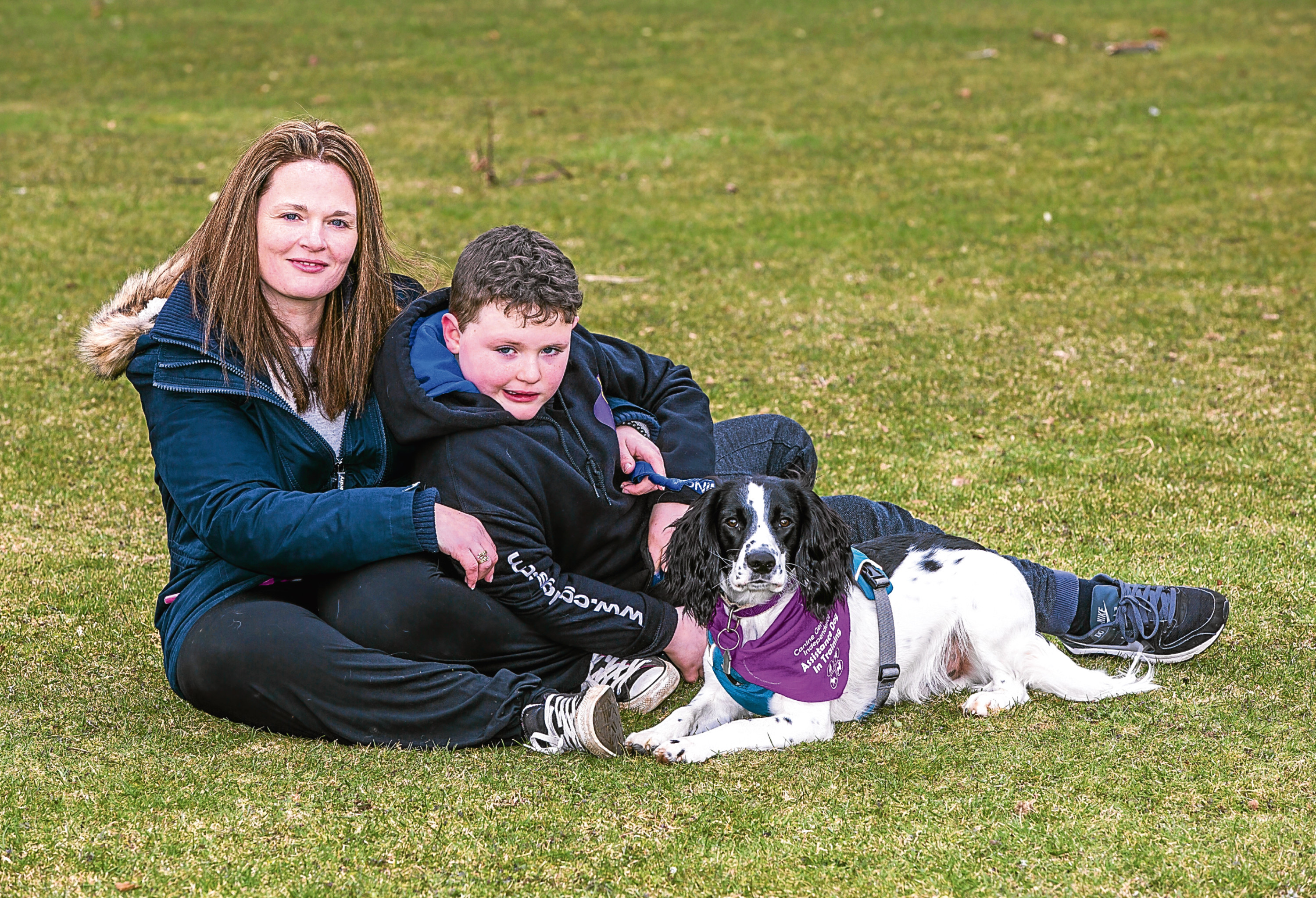
FIVE years ago Lisa Moir faced the nightmare scenario of explaining to her three-year-old son that his dad had died.
Understandably, parents try to break such heartbreaking news to their children as gently as possible.
But Lisa couldn’t say things like “there’s a new star in the sky” or “daddy has gone to sleep” to Stuart, who has autism.
“Everything is very literal with Stuart,” explained Lisa, 37, from Alford in Aberdeenshire.
“Children are often told someone is a bright star in the sky.
“With his autism he struggled to understand the meaning or concept behind idioms.”
Lisa’s husband suffered from muscular dystrophy and tragically lost his fight with pneumonia.
She took steps to ensure her son could say a proper goodbye.
“My husband had an open casket at his mum’s and I took the decision to take Stuart so he could understand where daddy had gone,” said Lisa. “A lot of people couldn’t get their head around why I took him to the church and cemetery but it was the only way for him to understand.”
People diagnosed with autism can struggle to take on board information and, in turn, society often struggles to understand the disability.
Lisa, however, is determined to raise awareness of the condition affecting her wee boy, who is now eight.
Sunday marked World Autism Awareness Day, coinciding with a National Autistic Society campaign called Too Much Information.
Lisa wants people to understand that Stuart and other autistic people often feel like they are being bombarded with sights and sounds.
“It can be too much for him sometimes,” said Lisa.
“For example, when I ask him to take my cup and move to the kitchen and put it in the sink.
“Whereas if I simplify the information to ‘Stuart, mum’s cup in sink please’ then that might work. It’s about simplifying.
“I did a talk at his school recently and the children were fantastic.
“Instead of running past him and shouting, ‘Hi Stuart’, which he finds confusing, they now know to stop, put themselves in his eye-line and say hello – which gives him time to process it.”
Lisa wants her son to enjoy his independence as he grows up, but at the moment he struggles to understand things like road safety.
The family has started training an assistance dog through Canine Generated Independence.
The dog, Jess, tracks Stuart when he wanders off and is helping to educate him about “stranger danger”.
Aside from the training, Stuart and Jess are now best pals.
Jenny Paterson, National Autistic Society Scotland director, said: “We are asking people to think about the small changes they can make to build a more autism-friendly Scotland, whether at work, on public transport, or at the shops.
“Giving people time to think, using clear language, and showing patience can make a huge difference to the 58,000 autistic people living in this country.”
Visit autism.org.uk/scotland

Enjoy the convenience of having The Sunday Post delivered as a digital ePaper straight to your smartphone, tablet or computer.
Subscribe for only £5.49 a month and enjoy all the benefits of the printed paper as a digital replica.
Subscribe